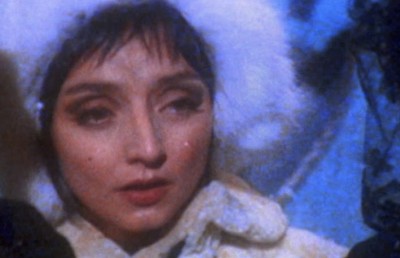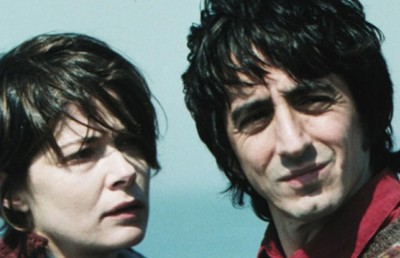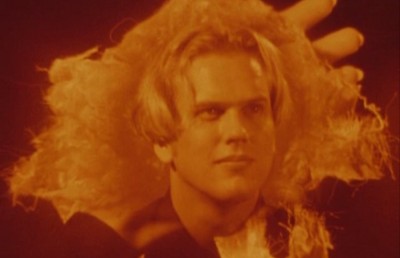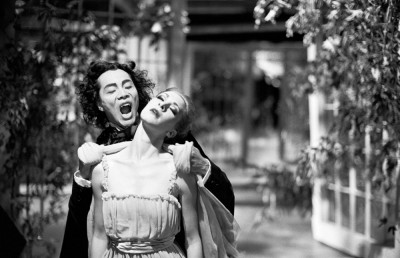Guy Maddin: Tales From a Maverick’s Diary
Maddin Retrospective
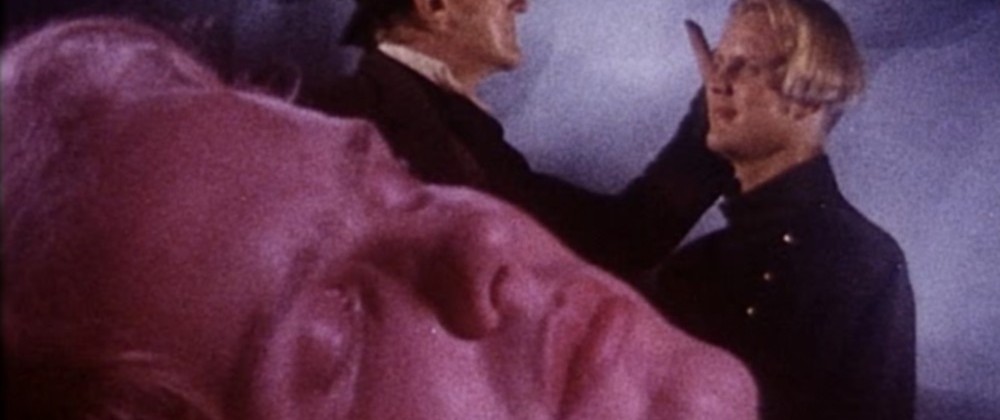
The last couple of years have been a wonderfully productive and rewarding moment for Canada’s renaissance filmmaker Guy Maddin. Along with the autobiographical short feature Cowards Bend at the Knee (2003) and the feature period piece (Depression era Winnipeg) The Saddest Music in the World (2003), recent times have seen the publication of Maddin’s personal musings, From the Atelier Tovar: Selected Writings, as well as major retrospectives of his work at Vienna, Toronto, Washington, D.C., Rotterdam, Bergamo, and, most recently, Montreal’s Cinématheque Quebecois (Sept. 29-Oct.7). Although Maddin hails from Winnipeg, Canada, his work is so wildly imaginative and forebodingly insular that he might as well come from a far flung planet where people speak in cryptic hushed tones, listen to crackling short wave radio, watch silent movies on black and white television sets, and live in constant fear of their every repressed psycho-sexual desire. Very few directors create a world as hermetically sealed by the four sides of the movie screen as Canada’s Guy Maddin. In fact it would be difficult for any one to mistake a single frame from a Maddin film as belonging to the real physical world.
Guy Maddin, sprung from the nurturing confines of The Winnipeg Film Group (started in 1974), is one of the world’s most idiosyncratic and remarkably original film stylists. Maddin met one of his future producers Greg Klymkiw at the University of Manitoba, where they both took a film class taught by George Toles, who in turn would become Maddin’s screenwriting collaborator (Toles has written, always in a collaborative fashion with Maddin, the screenplay for Tales From the Gimli Hospital (as script consultant), Archangel, Careful,_ Twilight of the Ice Nymphs_, and The Saddest Music in the World.)
Out of this emerged a repertoire that includes actors Kyle McCulloch (also assistant director on Tales From the Gimli Hospital), Michael Gottli, Victor Cowie and Sarah Neville. Maddin’s inimitable style, alienating to some, surreally engaging to others, is marked most strongly by a self-conscious form of historical anachronism. Maddin prefers to employ low-tech, in-camera effects (lenses that are greased or silk scrimmed, soft focus, iris effects, and superimpositions), high contrast lighting (usually black & white) and manipulated soundtracks to recreate the look and sound of silent and early sound film history. Even when Maddin goes ‘high-tech,’ it is with one step firmly planted in the past. For example, although Dracula: Pages From a Virgin’s Diary (2002) is highly dependent on digital technology for its editing and colorization, the film was shot on 16mm and (primarily) Super 8mm. As Maddin sheepishly notes, “It [Dracula] might be the most digitally driven movie ever made in Canada…and the most expensive Super 8 movie ever! A 1.6 million dollar Super 8 movie.” 1
As noted in his writings and interviews, Maddin’s favorite directors are Douglas Sirk, John Stahl, Frank Borzage, Joseph Von Sternberg, Rouben Mamoulian, and F.W. Murnau. Although most critics point to similarities between his work and films by David Lynch, Tim Burton or Jean Cocteau, my preference is to foreground the importance of the Danish master Carl Dreyer on Maddin’s style and sensibility. Being from Icelandic parentage, Maddin shares with Dreyer a Nordic sensibility that extends to questions of visual style (painterly), rhythm (slow), and mood (lugubrious). The key Dreyer films for Maddin are Vampyr (1932), Day of Wrath (1943), and Ordet (1955). The matter of fact manner in which the wife/mother Inger (Birgitte Federspiel), lying dead in her coffin, comes to life at the end of Ordet seems to have inspired the many resurrected dead which appear across Maddin’s films, including his formative first short film The Dead Father, Cowards Bend at the Knee, The Twilight of the Ice Nympth, and Dracula. Along with Ordet, Dreyer’s two art house horror films Vampyr and Day of Wrath, with their inverted expressionism (‘grey’ and white), psychological claustrophobia, silent-talkie aesthetic (Vampyr), and heightened melodrama, cast a large shadow over Maddin’s work. The only thing missing from Dreyer is Maddin’s absurdist humor.
Most of Maddin’s film references are pre-1940 (German expressionism, 1920’s Soviet montage cinema, Kammerspiel, the German mountain films, and Universal horror, especially the films of Lon Chaney). This appropriation of film history rarely exists in a pure, unadulterated state. In Archangel for example, the characters and setting are pre-revolutionary Russia, but the aesthetic sensibility is far more Germanic. Pinpointing a single source point would be impossible. For example, concerning Archangel, Joseph von Sternberg’s Scarlet Empress (1932), with its histrionic performances and anachronistic art direction, would be a good starting point. But the catalogue of film references would also include Soviet films of the twenties/thirties, Carl Dreyer, German expressionism and Maddin’s own earlier works. Maddin also returns to the same sources, as with Scarlet Empress, which he references with the ‘swing’ shots from Dracula: Pages from a Virgin’s Diary. His films may look and feel ancient, but they are laced with comical self-consciousness (for example, during a battle scene in Archangel we see two men carrying a huge, modern bomb). Thematically and narratively his films are marked by fore-grounded Freudianism (Oedipal complexes, social/sexual repression, and bisexuality), eruptions of graphic violence, twisted humor and, always, an underlying streak of sexual perversion (the homoeroticism between Lt. Boles and the young boy in Archangel, or the love between a female statue and a woman in Twilight of the Ice Nympth). Gimli’s concluding ass-grappling showdown between the two male leads is a textbook example of all the above elements. While the “return of the repressed” forms the bulk of Maddin’s thematically seminal first short, The Dead Father, where a young man’s recently deceased father refuses to stay dead (like the son in another Canadian minor classic, Deathdream, 1974, Bob Clark).
Careful, Maddin’s third feature, solidified his status as Canada’s most archaically inventive, and eccentric, visual stylist. Careful is an absurdly comic, Freudian fairy tale (Oedipal/Electra complexes) set in a Swiss Alp town, Tolzbad, which is so precariously situated among the mountains that every citizen must guard their every word to avert an avalanche. Only in certain places protected by “acoustic shelters” can normal levels of sound be allowed. The town takes anal measures to safeguard its security: domestic animals have their vocal chords severed, children are tied and gagged, and even the voice-over narrator speaks in a hushed voice. The muted lifestyle in Tolzbad is an obvious metaphor for social and sexual repression. The film’s ingenuity rests in a visual style which serves this theme of repression well, and also engages in a fascinating, synchronic patchwork of film history. Maddin’s unnatural use of colour (orange, yellow, green, blue, violet) recalls both early silent cinema (in its colour tinting and toning), the early sound period, most notably the film Maddin has cited as an influence, The King of Jazz (1928), and the German Weimar period “mountain films.” There are other German film references: the Nazi-like “Frau teacher” (Jackie Burroughs); the Werner Krauss/Dr.Caligari look-a-like Herr Trotta (Victor Cowie); and the exclusive studio bound, UFA-like sets, an aesthetic preference which expands to all of Maddin’s films and can be traced back to cinema’s original fantasist, George Méliès.
The other important film history touchstone in Careful is the horror genre, a genre which Maddin has continually flirted with. The external, nocturnal sets are patterned after the Universal Frankenstein films; the use of shadows in certain early scenes is reminiscent of Carl Dreyer’s Vampyr (1932); and there are scenes of exceedingly graphic violence: the coroner drives a large nail through the heart of each dead citizen as punishment for his Oedipal desires, and Johann (Brent Neale) mutilates his mouth with a hot poker and then cuts off four of his fingers with garden shears. This level of violence may be common in the modern horror film, but was not even a remote possibility in the period referenced by Maddin (Universal studios, German Expressionism, Carl Dreyer). This ‘aesthetic anachronism’ occurs in many Maddin films, beginning with his formative first short film _The Dead Father. In this autobiographical short Maddin tries to exorcise the pain of having lost his father at an early age, with the story of a dead father (Dan P. Snidal) who routinely returns from the grave as a walking undead to haunt the “domain of memory.” In the penultimate scene the son (John Harvie) takes a spoon to his dead father’s stomach and begins to eat his insides. Even dead and half-eaten, the father wakes up and freezes his son with a stern glance. In Tales From the Gimli Hospital, Gunnar (Michael Gottli) has his leg graphically picked open with a scythe. In Archangel soldiers have their eyes gouged out, are disemboweled, and strangled with their own intestines; and in Twilight of the Ice Nympths a fable-like atmosphere is rudely disturbed when Amelia (Shelley Duval) hammers a nail into Cain Ball’s (Frank Gorshin) cranium.
Maddin draws voraciously from the cinematic past, especially the 1920’s, his favorite cinematic period. One of the seminal figures of Maddin’s philosophical world view is Lon Chaney, famous for his numerous realistic performances of physically tortured characters (legless, torsoless) which earned him the nickname “man of a thousand faces.” In a review essay of a Lon Chaney DVD box-office set Maddin refers to Chaney’s extreme physical performances as “disfigurement allegories.” This same allegorical use of physical disfigurement as an expression of emotional pain or psychological trauma is common across all of Maddin’s work. For example, the one-legged soldier Lt. Boles (Kyle McCulloch) in Archangel, the mute denizens of Tolzbad and one-eyed father (Michael O’Sullivan) in Careful, the lame Dr. Solti (R.H. Thompson) in Twilight of the Ice Nymphs, and the legless Lady Port-Huntly (Isabella Rossellini) in The Saddest Music in the World. Love and the pain and suffering that comes with it, especially that caused by humanity’s sadistic capacity for envy and jealousy, are the founding principles of Maddin’s universe. With Maddin everything exists on the surface, plain for everyone to see, and the physical disfigurement of his characters are clear signs of their inner anguish. This is something which distinguishes his work: eliminating the need for subtext by bringing everything to the surface. It is as if the world lived out its every Freudian psychosis and nightmare in the wide open for everyone to see.
Although Maddin’s earliest works were wholly based on autobiography and his knowledge of cinematic history, social and political messages have begun to creep into his later works, namely Dracula: Pages From a Virgin’s Diary (2002) and The Saddest Music in the World (2003). With Dracula Maddin wanted to remain as faithful as possible to the Stoker novel, and what he does is foreground the political, psycho-sexual, and gender issues that have been part of the novel’s critical discourse for decades. The film begins with the title card “England, 1897” followed by the title cards “Immigrants” and “Others” with blood pouring over a map of England. Dracula (Wei-Qiang Zhang) represents the “Other” in the most speculative sense possible, as the ‘undead’ aristocratic whose longevity alone grants him wealth. Within the context of repressed Victorian sexual mores, Dracula represents the threat of sexual carnality let loose. This is fore-grounded by having the two female characters, Lucy (Tara Birtwhistle) in the first half and her best friend Mina (Cindy Marie Small) in the second half, as the story’s central characters. With his blood red eyes, flowing black cape (colored digital red on the inside), and long, flowing hair, Dracula poses a sexually charged figure against the chaste, stiff figures of Van Helsing (Dave Moroni) and the three male suitors Jonathan Harker (Johnny A. Wright), Arthur Holmwood (Stephen Leonard), and Jack Seward (Matthew Johnson). Both Lucy and Mina come alive sexually in the presence of Dracula. In a striking plot shift that belies the Victorian sexual mores of the period, both Lucy and Mina are forthright and brazen in their sexual desires.
This is no more in greater evidence in the dance scene where Mina’s obvious attempts to fellate Jonathan are rebuked. After the scene of this blunt refusal of her sexual advances, Mina engages in a sensual ballet with Dracula before being vampirized. At this point near the film’s end Van Helsing and his chaste troop of suitors arrive at the castle to kill and again repress the sexual desires that the Dracula figure represents. In pure Maddin thematics, the men envy the sexually potent figure of Dracula and must extinguish the threat with phallic knives and wooden stakes. In the climax Dracula, weakened by sun exposure, is impaled from behind by Van Helsing with a long stake. During this violent moment Helsing’s face is poised in a feral grimace which marks the first time we see him express any emotion. The final image of Dracula is a fog-enshrouded long shot of his body resting horizontally on an upright stake, the union forming a Christian cross. The final image of Van Helsing is of him secretly stealing Mina’s undergarments, which Dracula had earlier removed, under his coat. The meaning is clear: female sexuality has once again been restored to its proper place, hidden behind the cloak of patriarchy. On top of this, Dracula is played by an actor of Chinese descent, Wei-Qiang Zhang, which adds a racial element to the already rich thematics (although Zhang played the role in Mark Godden’s ballet and hence was not ‘picked’ by Maddin, Maddin does foreground his ‘Asian-ness’ by the pointed reference to the “other.” ).
His latest feature The Saddest Music in the World tells the bizarre story of a music contest between First and Third World Nations competing for the honor of the most melancholic music. Team US is led by Charles Kent (Mark McKinney), a failed Broadway producer who returns to his native home Canada. Although the story is absurdist, Kent’s domineering personality, underhanded methods, and win at all costs attitude suggests parallels to the US’s self-proclaimed status as the world’s reigning superpower and their imperialist foreign policies. Such a reading is made more viable by the film being released during the Iraqi War.
Maddin’s strongest works remain Archangel, Careful, Heart of the World, and Dracula: Pages from a Virgin’s Diary. His weaker works, Twilight of the Ice Nymphs and The Saddest Music in the World, fail for similar reasons. Ice Nymph marked his first film shot on 35mm, in color, and featuring ‘famous’ (for Maddin) actors taken from beyond his usual repertoire (Frank Gorshin, Shelley Duval, Pascale Bussières, and Alice Krige). Twilight of the Ice Nymphs was Maddin’s biggest budgeted film at the time, and consequently his first film to be affected by productorial interferences and creative compromises. Strangely enough, the pressure to film in 35mm was seen by Maddin as an aesthetic drawback. In an interview he reveals how shooting in 35mm resulted in a working method that was less spontaneous and less intimate than his usual 16mm format. 2
Where Nympth was burdened with far more dialogue than any other Maddin film, Saddest, which supplanted Nymph as his most expensive film (3.5 million), seems too bound by a linear narrative shaped around the music contest, which has the effect of minimizing the auxiliary moments that make Maddin’s films free flowing and dreamlike. The traditional Maddin visual style, well matched to the respective aesthetic touchstones in Archangel (1920’s Soviet cinema and WW1 stock footage), Careful (German Expressionism and the mountain film, The King of Jazz), Heart of the World (Soviet agit-prop and montage theory), and Dracula (Dreyer’ s Vampyr), seems forced in the service of Depression era Winnipeg. As such the film comes perilously close to self-parody, to being “Maddinesque,” an expression, like Felliniesque or Lynchian, potentially poisonous when meant as a personal reference point.
The short film Odilon Redon, named after the titular French Symbolist Painter (1840-1916), was inspired by Abel Gance’s La Roue (1922). In keeping with the latter’s style, Odilon Redon introduced a formal element which would distinguish his two important later works, Heart of the World and Dracula: frenetic, breathless editing. Two factors contributed to this important development in Maddin’s style: the increasing collaboration with former student deco dawson, and the advent of digital editing. deco dawson is a young, experimental/surrealist filmmaker in his own right, with a series of five short films entitled Five made between 1998 and 2001. Dawson was credited with some camera work and as micro-montage editor on The Heart of the World, but his responsibilities grew in Dracula, where he worked as associate director and editor. The Heart of the World, which Maddin calls an “agit-prop pastiche” is true to its cinematic roots, with its breathtaking montage of 1920’s Soviet-styled Constructivist imagery. In the difficult to follow story, a female scientist, Anna (Leslie Bais), is torn between three potential lovers, two brothers, one an actor, the other a mortician, and an appropriately slimy, rich industrialist. While looking through her telescope one day she discovers that the world’s heart is cracked. In true revolutionary spirit, Anna chooses the liberating act of self-sacrifice over sexual companionship. To save the world she enters inside the telescope and slides down into the earth’s center, where she becomes the world’s new heart. The telescope transforms into a movie projector, and Anna her projector lamp. Maddin states that the film was “his attempt to create a new mythology about the birth of cinema.” 3
The influence of dawson’s ‘micro-editing’ and the new found freedom of computer editing meets its zenith in Dracula, a technical and stylistic tour de force where Maddin/dawson re-energize Sergei Eisenstein’s ‘montage of attraction’ by taking the idea of collision and contrast to its fullest conceptual level. In Dracula Maddin uses every possible visceral effect to keep the viewer sensorially stimulated and agitated. Shots come and go at break-neck pace, and edits alternate from being fluid to cubistic; the camera is in constant motion, often moving as if a partner with the dancers (in contrast to the mainly static camera of his earlier films); and the image continuously alternates in speed (from regular to slow motion), color (black and white to various thematically motivated tints, with red, green, blue, and gold being primary), shape (from wide screen aspect ratio to various iris effects), and format (super 8, and 16mm). Although shot on film, it could not have been made without the input of computer technology. To quote Maddin, “…almost every one of the 2000 cuts in the movie has a digital effect.” 4 The result is the richest demonstration to date of what constitutes Maddin’s signature style: the archaic made (post)modern.
Even with Maddin’s status as festival poster boy and his recent critical accolades, an element which separates Maddin from the “big boys” is the nature of his career path. Maddin’s formats of choice are super 8mm, 16mm, and Super 16mm, and has shot on 35mm only once so far, on Twilight of the Ice Nympth. Maddin may be best known for his five theatrical features (Tales From the Gimli Hospital, Archangel, Careful, Twilight of the Ice Nympths, and The Saddest Music in the World), but he has made over twenty shorts, including documentaries (BBB 1990), docu-dramas (Indigo High – Hatters 1991), television shows (The Hands of Ida 1995), ‘remakes’ (The Hoyden 1998, a condensed version of Eric Von Stroheim’s Walking Down Broadway), music videos (It’s a Wonderful Life 1991), musicals (Sissy Boy Slap Party 1995), advertisements, experimental (Odilon Redon 1995), a film/art installation project (the 60 minute autobiographical Cowards Bend at the Knee 2003), plus a made for television feature based on a ballet, Dracula: Pages From a Virgin’s Diary. Granted such variety is as much out of necessity –to earn a living- than design, but I can not think of any other major director who continues to work in such a wide variety of forms, projects, and mediums, and does so with little concern for how it may affect his ‘career.’
Given the market-driven nature of the film industry, the creatively-charged Maddin continues to have difficulty getting projects off the ground, which partly explains the variety of projects he is forced to take. Fortunately, there are things beyond financial wealth which Maddin can take solace in: the fact that he has garnered worldwide recognition; is Canada’s only genuine cult director; that in 1995 at the age of 39 he became the youngest recipient of the Telluride Lifetime Achievement Award; and that his work has been and continues to be a source of inspiration for young Canadian filmmakers. Perhaps we should take a cue from the title of an article from the Bergamo 2004 festival catalogue, “Wake Up, Canada! 5
A much abbreviated version of this essay appeared in French translation in the journal 24 Images No.118, September 2004, 5-7.
Notes
- Guy Maddin. “Count of the Dance: Guy Maddin on Dracula-Pages from a Virgin,” by Mark Peranson. Cinema Scope # 10, March 2002, 11. ↩
- Caelum Vatnsdal.. Kino Delirium: The Films of Guy Maddin (Winnipeg : Arbeiter Ring Publishing, 2000): 110-111. ↩
- Guy Maddin, interview by Pier Maria Bocchi, for The Bergamo Film Meeting 2004, p. 29 (my translation from Italian). ↩
- “Count of the Dance: Guy Maddin on Dracula-Pages from a Virgin.” Interview by Mark Peranson. Cinema Scope #10, March 2002, p. 11 ↩
- The full title of this Italian article is “Wake Up, Canada! Dreams, Amnesia, Propaganda…or how to get lost in Maddinesque,” by Paolo Bertolin, Bergamo Film Meeting 2004, March 13-21, p. 49-55. ↩



